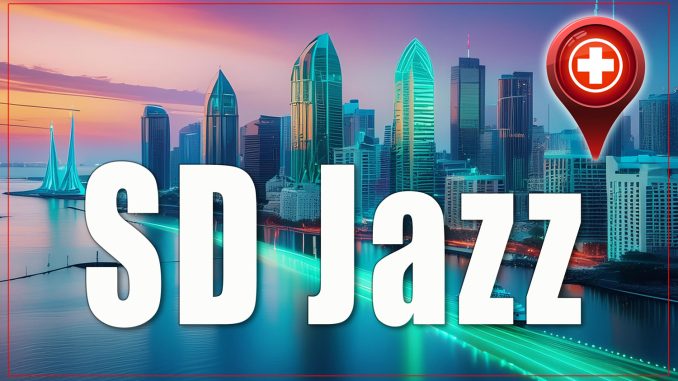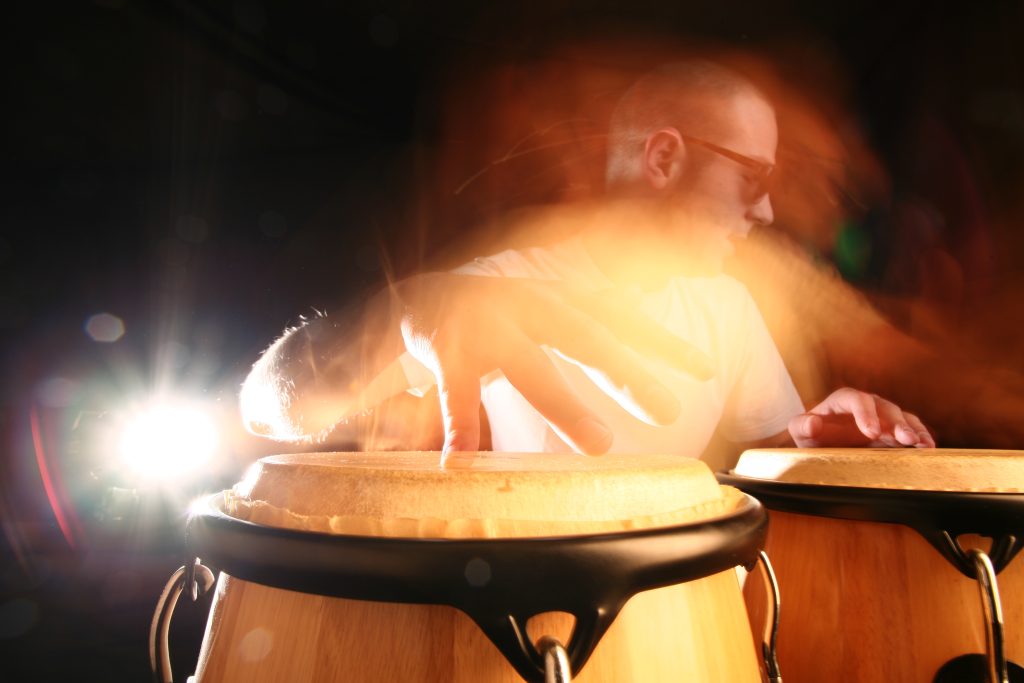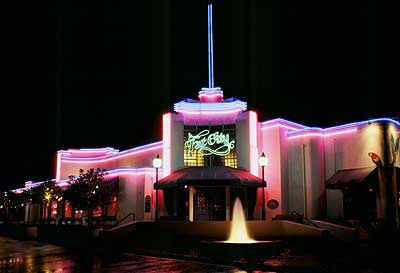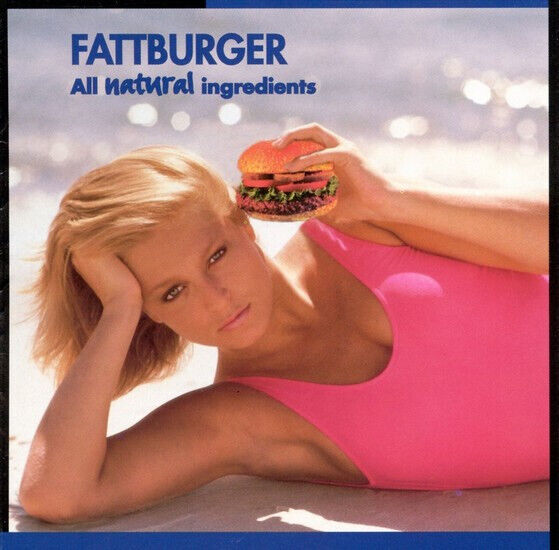
San Diego’s Swingin’ Past: A Jazz Journey Through the Decades

San Diego, known for its stunning beaches and perfect weather, also boasts a rich jazz history that often goes unsung. From the early days of the “Harlem of the West” to the thriving jazz scene of today, the city has been home to legendary musicians and iconic venues that have left an indelible mark on the world of jazz.
Wendy joined me in 1995 to live on my motor yacht, Dream Warrior. We lived on the boat at the Sheraton Harbor Island Marina, where our dockmaster was the famous Jazz Saxophonist Gary Scott. Gary was Frank Sinatra’s first-seat saxophonist, and his wife Kippy was a former Miss Washington and a renowned harpist. Our small marina was the place to be in the jazz world, and we enjoyed every minute.
San Diego’s music history was and is deep. I have captured the rich history and styles in the album below with my ambient, chill, and downtempo style. But to appreciate the album, it is first vital to put some names with the sounds.
The Early Years: “Harlem of the West”
In the 1920s and 1930s, downtown San Diego was dubbed the “Harlem of the West” due to its vibrant African-American music scene. The Douglas Hotel at Third and Market housed the Creole Palace, which featured live shows with dancers and comedians. The Black and Tan, located on Imperial Avenue in Logan Heights, was considered the first real jazz club in San Diego.
The Golden Era: 1940s-1970s
From the 1940s to the 1970s, Logan Heights was the heart of San Diego’s African-American community, and Imperial Avenue was the musical Mecca of the city’s black nightlife. During this time, jazz giants like Sonny Criss, Hampton Hawes, and Teddy Edwards would come down from Los Angeles to perform in San Diego’s clubs.
Local legends also emerged during this era, such as trumpeter Fro Brigham, who turned down offers from Duke Ellington and Billy Eckstine to remain the “King” of San Diego’s club scene. Tenor saxophonist Harold Land, who later gained fame with the Max Roach/Clifford Brown Quintet, honed his skills in Brigham’s band.
Crossing the Color Line
In the 1950s and 1960s, musicians like George Nicolaidis frequently crossed the unstated but very real “color line” to sit in at black clubs[2]. Nicolaidis witnessed firsthand the slow process of desegregation and San Diego’s explosive growth following World War II.
San Diego has also been home to other notable jazz musicians, such as saxophonist James Moody, who settled in the city in the 1990s and became a beloved figure in the local jazz community until his passing in 2010.
San Diego’s Jazz Scene: From the ’80s Groove to Today’s Swingin’ Sounds

San Diego’s jazz scene has been thriving since the 1980s, with a vibrant community of artists and iconic venues that have kept the city’s musical heart beating strong. From the smooth sounds of the ’80s to the eclectic mix of today, San Diego has been a haven for jazz enthusiasts and a launching pad for some of the genre’s most talented musicians.
The ’80s Renaissance
The 1980s saw a resurgence of jazz in San Diego, with a new generation of artists taking the stage at clubs like Mickey San and Fatt City. Mickey San, located in the heart of the Gaslamp Quarter, was a popular spot for local and touring jazz acts, featuring a cozy atmosphere and an impressive lineup of musicians.
Fatt City, another ’80s hotspot, was known for its lively jam sessions and its ability to attract top-tier talent from across the country. The club’s intimate setting and enthusiastic crowds made it a favorite among jazz aficionados and musicians alike.
Humphreys by the Bay: A Jazz Institution
No discussion of San Diego’s jazz scene would be complete without mentioning Humphreys Concerts by the Bay. This iconic venue, nestled along the shores of Shelter Island, has been hosting jazz concerts since the 1980s and continues to be a must-visit destination for music lovers.
Over the years, Humphreys has welcomed legendary artists like Ella Fitzgerald, Miles Davis, and Herbie Hancock, as well as contemporary stars like Diana Krall and Chris Botti. The venue’s stunning waterfront setting and exceptional acoustics make it the perfect place to enjoy a night of world-class jazz.
The 5th Ave Jazz Festival and Beyond
Today, San Diego’s jazz scene continues to thrive, with events like the 5th Ave Jazz Festival celebrating the city’s musical heritage. The festival, held annually in the Gaslamp Quarter, features local and national jazz acts performing on multiple stages.
The New Generation
Today, San Diego’s jazz scene is as vibrant as ever, with a new crop of talented musicians carrying on the city’s rich musical tradition. Local artists like Gilbert Castellanos, Holly Hofmann, and Joshua White are not only performing at venues throughout the city but also actively nurturing the next generation of jazz talent through educational programs and mentorship.
Castellanos, a renowned trumpeter, has been a driving force behind the city’s jazz renaissance, curating concerts and events that showcase the depth and diversity of San Diego’s musical talent. His “Young Lions” series at Panama 66 in Balboa Park has become a platform for emerging artists to hone their skills and gain exposure.
A Thriving Community
San Diego’s jazz community extends beyond the stage, with organizations like Jazz 88.3, the city’s premier jazz radio station, working tirelessly to promote and support the genre. The station’s website serves as a comprehensive resource for jazz enthusiasts, listing virtually every jazz event happening in the city.
The San Diego Jazz Fest, held annually over Thanksgiving weekend, is another testament to the city’s love for jazz. The festival brings together local and national acts for a multi-day celebration of the genre, attracting thousands of music lovers from across the country.
San Diego’s Smooth Groove: The Sultry Sounds of Smooth Jazz
San Diego has long been a hub for smooth jazz, with a vibrant scene that has produced some of the genre’s most influential artists and groups. From the silky saxophone melodies to the sultry guitar riffs, the city’s smooth jazz movement has left an indelible mark on the music world.
Larry Himmel: The Voice of San Diego’s Smooth Jazz
One of the key figures in San Diego’s smooth jazz scene was Larry Himmel, a beloved radio personality who helped popularize the genre in the city. As the host of the “Lites Out San Diego” show on KIFM, Himmel introduced listeners to the latest and greatest in smooth jazz, showcasing both local and national artists.
Himmel’s passion for the music and his warm, engaging personality made him a favorite among listeners and musicians alike. He was known for his ability to connect with his audience and create a sense of community around the music he loved.
Fattburger: San Diego’s Smooth Jazz Powerhouse
 No discussion of San Diego’s smooth jazz scene would be complete without mentioning Fattburger, the city’s most iconic smooth jazz band. Formed in the early 1980s, Fattburger quickly gained a reputation for their infectious grooves and virtuosic musicianship.
No discussion of San Diego’s smooth jazz scene would be complete without mentioning Fattburger, the city’s most iconic smooth jazz band. Formed in the early 1980s, Fattburger quickly gained a reputation for their infectious grooves and virtuosic musicianship.
Led by keyboardist Carl Evans Jr., the band featured a rotating cast of top-tier musicians, including saxophonist Hollis Gentry III and guitarist Evan Marks. Their albums, such as “Good News” and “Living in Paradise,” became staples of the smooth jazz genre, earning them a devoted following both in San Diego and beyond.
Hollis Gentry III: The Sax Man of San Diego
Hollis Gentry III was another key figure in San Diego’s smooth jazz scene, known for his soulful saxophone playing and his contributions to Fattburger. Gentry’s smooth, expressive style was a perfect fit for the genre, and he quickly became one of the city’s most in-demand musicians.
In addition to his work with Fattburger, Gentry released several solo albums, including “Hollis Gentry III” and “Groove Yard,” which showcased his talent as a composer and bandleader. His music continues to be celebrated by smooth jazz fans around the world.
Steve Reid: The Drummer’s Drummer
Steve Reid was a legendary drummer who made his mark on San Diego’s smooth jazz scene through his work with Fattburger and other local groups. Known for his impeccable timing and dynamic playing style, Reid was a master of the smooth jazz groove.
Reid’s contributions to the genre extended beyond his work as a performer. He was also a respected educator, teaching drumming and percussion at several San Diego-area schools and mentoring countless young musicians.
The Legacy of San Diego’s Smooth Jazz Scene
Today, San Diego’s smooth jazz scene continues to thrive, with a new generation of artists carrying on the tradition established by pioneers like Larry Himmel, Fattburger, Hollis Gentry III, and Steve Reid. The city’s annual Smooth Jazz Festival, held at the Embarcadero Marina Park, attracts thousands of fans from around the world, showcasing the enduring appeal of the genre.
From the early days of KIFM’s “Lites Out San Diego” to the contemporary sounds of today’s smooth jazz artists, San Diego has been a vital part of the genre’s history and evolution. The city’s contribution to smooth jazz is a testament to the power of music to bring people together and create a sense of community, one silky smooth note at a time.
Looking to the Future
As San Diego’s jazz scene continues to evolve, one thing remains constant: the city’s unwavering commitment to nurturing and celebrating this timeless art form. With its rich history, talented artists, and dedicated community, San Diego is poised to remain a jazz lover’s paradise for generations to come.
From the groovy ’80s to the swingin’ sounds of today, San Diego’s jazz scene is a testament to the enduring power of music to bring people together and enrich the cultural fabric of a city. So the next time you’re in town, be sure to catch a show at one of San Diego’s many jazz venues and experience the magic for yourself.
A Legacy That Endures
From the early days of the Creole Palace and the Black and Tan to the current crop of jazz clubs and festivals, San Diego’s jazz history is a testament to the enduring power of the genre. As the city continues to evolve, its jazz roots remain a vital part of its cultural fabric, ensuring that the music will swing on for generations to come.



Be the first to comment